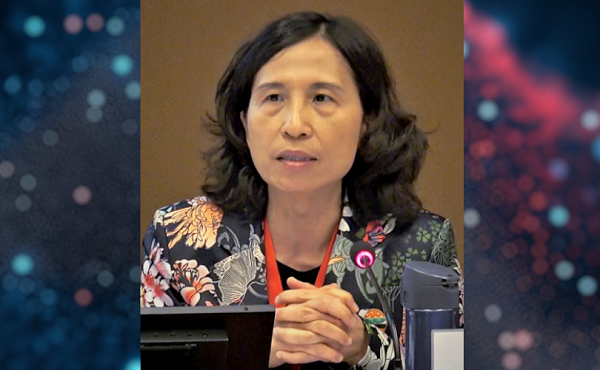Brownstone Institute
What the Bud Light Fiasco Reveals about the Ruling Class

From the Brownstone Institute
BY
What were they thinking? How did someone believe that making “trans woman” Dylan Mulvaney the icon of a Bud Light ad campaign, complete with a beer can with Mulvaney’s image on it, would be good for sales? With an ad featuring this person vamping around in the most preposterously possible way?
Dylan, who had previously been interviewed on trans issues by President Biden himself, was celebrating “365 Days of Girlhood” with a grotesquely misogynistic caricature that would disgust just about the whole market for this beer. Indeed, this person’s cosplay might as well be designed to discredit the entire political agenda of gender dysphoriacs.
Sure enough, because we don’t have mandates on what beers you must buy, sales of the beer plummeted.
The parent company Anheuser-Busch’s stock lost $5 billion or 4 percent in value since the ad campaign rollout. Sales have fallen 50-70 percent. Now there is worry within the company of a widening boycott to all their brands. A local Missouri distributor of the product canceled an appearance by Budweiser Clydesdale horses due to public anger.
Ads are supposed to sell products, not prompt a massive public backlash that results in billions in losses. This mistake could be for the ages, marking a distinct departure from corporate deference to wackadoodle ideas from the academy and a push for more connection to on-the-ground realities.
The person who made the miscalculation is Alissa Gordon Heinerscheid, Vice President in charge of marketing for Bud Light. She explained that her intention was to make the beer King of ‘Woke’ Beers. She wanted to shift away from the “out of touch” frat party image to one of “inclusivity.” By all accounts, she actually believed this. More likely, she was rationalizing actions that would earn her bragging rights within her social circle.
Digging through her personal biography, we find all the predictable signs of tremendous detachment from regular life: elite boarding school (Groton, $65K a year), Harvard, Wharton School, coveted internship at General Foods, and straight to top VP at the biggest beverage company in the world.
Somehow through all that, nothing entered her brain apart from elite opinion on how the world should work with theories never actually tested by real-world marketing demands. Would that she had worked at Chick-Fil-A at some point in her teen years, perhaps even preserving some friend relationships ever since. It might have protected her from this disastrous error.
She is a perfect symbol of a problem that afflicts high-end corporate and government culture: a shocking blindness toward the mainstream of American life, including working classes and other people less privileged. They are invisible to this crowd. And her type is pervasive in corporate America with its huge layers of management developed over 20 years of loose credit and push for token representation at the highest levels.
We’ve seen this manifest over three years and ruling-class types imposed lockdowns, masks, and vaccine mandates on the whole population without regard to the consequences and with full expectation that the food will continue to be delivered to their doorsteps no matter how many days, months, or years they stay at home and stay safe.
The working classes, meanwhile, were shoved out in front of the pathogen to make their assigned contribution to herd immunity so that the rich and privileged could preserve their clean state of being, making TikTok videos and issuing edicts from their safe spaces for two or even three years.
In the late 19th century, the blindness of class detachment was a problem that so consumed Karl Marx that he became possessed with the desire to overthrow class distinctions between labor and capital. He kicked off a new age of the classless society under the leadership of the vanguard of the proletarian classes. In every country where his dreams became a reality, however, a protected elite took over and secured themselves from the consequences of their deluded dreams.
The people who in recent decades have drunk so deeply from the well of the Marxian tradition seem to be repeating that experience with complete disinterest in the lower classes, while pushing a deepening chasm that only became worse in the lockdown years in which they have controlled the levers of power.
It was startling to watch, and I could hardly believe what was happening. Then one day the incredibly obvious dawned on me. All official opinion in this country and even the whole world – government, media, corporations, technology – emanated from the same upper echelons of the class structure. It was people with elite educations and who had the time to shape public opinion. They are the ones on Twitter, in the newsrooms, fussing with the codes, and enjoying the laptop life of a permanent bureaucrat.
Their social circles were the same. They knew no one who cut trees, butchered cows, drove trucks, fixed cars, and met payroll in a small restaurant. The “workers and peasants” are people the elites so otherized that they became nothing more than non-playing characters who make stuff work but are not worthy of their attention or time.
The result was a massive transfer of wealth upwards in the social ladder as digital brands, technology, and Peloton thrived, while everyone else faced a barrage of ill health, debt, and inflation. As classes have grown more stratified – and, yes, there is a reason to worry about the gap between the rich and the poor when malleability is restricted – the intellectual producers of policy and opinion have constructed their own bubble to protect themselves from by being soiled by contrary points of view.
They want the whole world to be their own safe space regardless of the victims.
Would lockdowns have happened in any other kind of world? Not likely. And it would not have happened if the overlords did not have the technology to carry on their lives as normal while pretending that no one was really suffering from their scheme.
The Bud Light case is especially startling because the advent of commercial society in the high Middle Ages and through the Industrial Revolution was supposed to mitigate against this sort of myopic stratification. And this has always been the most compelling critique of Marx: he was raging against a system that was gradually winnowing away the very demarcations in classes that he decried.
Joseph Schumpeter in 1919 wrote an essay on this topic in his book Imperialism and Social Classes. He highlighted how the commercial ethos dramatically changed the class system.
“The warlord was automatically the leader of his people in virtually every respect,” he wrote. “The modern industrialist is anything but such a leader. And this explains a great deal about the stability of the former’s position and the instability of the latter’s.”
But what happens when the corporate elites, working together with government, themselves become the warlords? The foundations of market capitalism begin to erode. The workers become ever more alienated from final consumption of the product they have made possible.
It’s been typical of people like me – pro-market libertarians – to ignore the issue of class and its impact on social and political structures. We inherited the view of Frederic Bastiat that the good society is about cooperation between everyone and not class conflict, much less class war. We’ve been suspicious of people who rage against wealth inequality and social stratification.
And yet we do not live in such market conditions. The social and economic systems of the West are increasingly bureaucratized, hobbled by credentialism, and regulated, and this has severely impacted class mobility. Indeed, for many of these structures, exclusion of the unwashed is the whole point.
And the ruling class themselves have ever more the mindset as described by Thorstein Veblen: only the ignorable do actual work while the truly successful indulge in leisure and conspicuous consumption as much as their means allow. One supposes that this doesn’t hurt anyone…until it does.
And this certainly happened in very recent history as the conspicuous consumers harnessed the power of states all over the world to serve their interests exclusively. The result was calamity for rights and liberties won over a thousand years of struggle.
The emergent fissures between the classes – and the diffusions of our ruling class into many sectors public and private – suggest an urgency for a new consciousness of the real meaning of the common good, which is inseparable from liberty. The marketing director of Bud Light talked a good line about “inclusivity” but she plotted to impose everything but that. Her plan was designed for the one percent and to the exclusion of all the people who actually consume the product, to say nothing for the workers who actually make and deliver the product she was charged with promoting.
That the markets have so brutally punished the brand and company for this profound error points the way to the future. People should have the right to their own choices about the kind of life they want to live and the products and services they want to consume. The dystopia of lockdowns and woke hegemony of public opinion – complete with censorship – have become the policy to overturn if the workers are ever to throw off the chains that bind them.
The boycotts of Bud Light are but a beginning.
Brownstone Institute
FDA Exposed: Hundreds of Drugs Approved without Proof They Work

From the Brownstone Institute
By
The US Food and Drug Administration (FDA) has approved hundreds of drugs without proof that they work—and in some cases, despite evidence that they cause harm.
That’s the finding of a blistering two-year investigation by medical journalists Jeanne Lenzer and Shannon Brownlee, published by The Lever.
Reviewing more than 400 drug approvals between 2013 and 2022, the authors found the agency repeatedly ignored its own scientific standards.
One expert put it bluntly—the FDA’s threshold for evidence “can’t go any lower because it’s already in the dirt.”
A System Built on Weak Evidence
The findings were damning—73% of drugs approved by the FDA during the study period failed to meet all four basic criteria for demonstrating “substantial evidence” of effectiveness.
Those four criteria—presence of a control group, replication in two well-conducted trials, blinding of participants and investigators, and the use of clinical endpoints like symptom relief or extended survival—are supposed to be the bedrock of drug evaluation.
Yet only 28% of drugs met all four criteria—40 drugs met none.
These aren’t obscure technicalities—they are the most basic safeguards to protect patients from ineffective or dangerous treatments.
But under political and industry pressure, the FDA has increasingly abandoned them in favour of speed and so-called “regulatory flexibility.”
Since the early 1990s, the agency has relied heavily on expedited pathways that fast-track drugs to market.
In theory, this balances urgency with scientific rigour. In practice, it has flipped the process. Companies can now get drugs approved before proving that they work, with the promise of follow-up trials later.
But, as Lenzer and Brownlee revealed, “Nearly half of the required follow-up studies are never completed—and those that are often fail to show the drugs work, even while they remain on the market.”
“This represents a seismic shift in FDA regulation that has been quietly accomplished with virtually no awareness by doctors or the public,” they added.
More than half the approvals examined relied on preliminary data—not solid evidence that patients lived longer, felt better, or functioned more effectively.
And even when follow-up studies are conducted, many rely on the same flawed surrogate measures rather than hard clinical outcomes.
The result: a regulatory system where the FDA no longer acts as a gatekeeper—but as a passive observer.
Cancer Drugs: High Stakes, Low Standards
Nowhere is this failure more visible than in oncology.
Only 3 out of 123 cancer drugs approved between 2013 and 2022 met all four of the FDA’s basic scientific standards.
Most—81%—were approved based on surrogate endpoints like tumour shrinkage, without any evidence that they improved survival or quality of life.
Take Copiktra, for example—a drug approved in 2018 for blood cancers. The FDA gave it the green light based on improved “progression-free survival,” a measure of how long a tumour stays stable.
But a review of post-marketing data showed that patients taking Copiktra died 11 months earlier than those on a comparator drug.
It took six years after those studies showed the drug reduced patients’ survival for the FDA to warn the public that Copiktra should not be used as a first- or second-line treatment for certain types of leukaemia and lymphoma, citing “an increased risk of treatment-related mortality.”
Elmiron: Ineffective, Dangerous—And Still on the Market
Another striking case is Elmiron, approved in 1996 for interstitial cystitis—a painful bladder condition.
The FDA authorized it based on “close to zero data,” on the condition that the company conduct a follow-up study to determine whether it actually worked.
That study wasn’t completed for 18 years—and when it was, it showed Elmiron was no better than placebo.
In the meantime, hundreds of patients suffered vision loss or blindness. Others were hospitalized with colitis. Some died.
Yet Elmiron is still on the market today. Doctors continue to prescribe it.
“Hundreds of thousands of patients have been exposed to the drug, and the American Urological Association lists it as the only FDA-approved medication for interstitial cystitis,” Lenzer and Brownlee reported.
“Dangling Approvals” and Regulatory Paralysis
The FDA even has a term—”dangling approvals”—for drugs that remain on the market despite failed or missing follow-up trials.
One notorious case is Avastin, approved in 2008 for metastatic breast cancer.
It was fast-tracked, again, based on ‘progression-free survival.’ But after five clinical trials showed no improvement in overall survival—and raised serious safety concerns—the FDA moved to revoke its approval for metastatic breast cancer.
The backlash was intense.
Drug companies and patient advocacy groups launched a campaign to keep Avastin on the market. FDA staff received violent threats. Police were posted outside the agency’s building.
The fallout was so severe that for more than two decades afterwards, the FDA did not initiate another involuntary drug withdrawal in the face of industry opposition.
Billions Wasted, Thousands Harmed
Between 2018 and 2021, US taxpayers—through Medicare and Medicaid—paid $18 billion for drugs approved under the condition that follow-up studies would be conducted. Many never were.
The cost in lives is even higher.
A 2015 study found that 86% of cancer drugs approved between 2008 and 2012 based on surrogate outcomes showed no evidence that they helped patients live longer.
An estimated 128,000 Americans die each year from the effects of properly prescribed medications—excluding opioid overdoses. That’s more than all deaths from illegal drugs combined.
A 2024 analysis by Danish physician Peter Gøtzsche found that adverse effects from prescription medicines now rank among the top three causes of death globally.
Doctors Misled by the Drug Labels
Despite the scale of the problem, most patients—and most doctors—have no idea.
A 2016 survey published in JAMA asked practising physicians a simple question—what does FDA approval actually mean?
Only 6% got it right.
The rest assumed that it meant the drug had shown clear, clinically meaningful benefits—such as helping patients live longer or feel better—and that the data was statistically sound.
But the FDA requires none of that.
Drugs can be approved based on a single small study, a surrogate endpoint, or marginal statistical findings. Labels are often based on limited data, yet many doctors take them at face value.
Harvard researcher Aaron Kesselheim, who led the survey, said the results were “disappointing, but not entirely surprising,” noting that few doctors are taught about how the FDA’s regulatory process actually works.
Instead, physicians often rely on labels, marketing, or assumptions—believing that if the FDA has authorized a drug, it must be both safe and effective.
But as The Lever investigation shows, that is not a safe assumption.
And without that knowledge, even well-meaning physicians may prescribe drugs that do little good—and cause real harm.
Who Is the FDA Working for?
In interviews with more than 100 experts, patients, and former regulators, Lenzer and Brownlee found widespread concern that the FDA has lost its way.
Many pointed to the agency’s dependence on industry money. A BMJ investigation in 2022 found that user fees now fund two-thirds of the FDA’s drug review budget—raising serious questions about independence.

Yale physician and regulatory expert Reshma Ramachandran said the system is in urgent need of reform.
“We need an agency that’s independent from the industry it regulates and that uses high-quality science to assess the safety and efficacy of new drugs,” she told The Lever. “Without that, we might as well go back to the days of snake oil and patent medicines.”
For now, patients remain unwitting participants in a vast, unspoken experiment—taking drugs that may never have been properly tested, trusting a regulator that too often fails to protect them.
And as Lenzer and Brownlee conclude, that trust is increasingly misplaced.
- Investigative report by Jeanne Lenzer and Shannon Brownlee at The Lever [link]
- Searchable public drug approval database [link]
- See my talk: Failure of Drug Regulation: Declining standards and institutional corruption
Republished from the author’s Substack
Brownstone Institute
Anthony Fauci Gets Demolished by White House in New Covid Update

From the Brownstone Institute
By
Anthony Fauci must be furious.
He spent years proudly being the public face of the country’s response to the Covid-19 pandemic. He did, however, flip-flop on almost every major issue, seamlessly managing to shift his guidance based on current political whims and an enormous desire to coerce behavior.
Nowhere was this more obvious than his dictates on masks. If you recall, in February 2020, Fauci infamously stated on 60 Minutes that masks didn’t work. That they didn’t provide the protection people thought they did, there were gaps in the fit, and wearing masks could actually make things worse by encouraging wearers to touch their face.
Just a few months later, he did a 180, then backtracked by making up a post-hoc justification for his initial remarks. Laughably, Fauci said that he recommended against masks to protect supply for healthcare workers, as if hospitals would ever buy cloth masks on Amazon like the general public.
Later in interviews, he guaranteed that cities or states that listened to his advice would fare better than those that didn’t. Masks would limit Covid transmission so effectively, he believed, that it would be immediately obvious which states had mandates and which didn’t. It was obvious, but not in the way he expected.

And now, finally, after years of being proven wrong, the White House has officially and thoroughly rebuked Fauci in every conceivable way.
White House Covid Page Points Out Fauci’s Duplicitous Guidance
A new White House official page points out, in detail, exactly where Fauci and the public health expert class went wrong on Covid.
It starts by laying out the case for the lab-leak origin of the coronavirus, with explanations of how Fauci and his partners misled the public by obscuring information and evidence. How they used the “FOIA lady” to hide emails, used private communications to avoid scrutiny, and downplayed the conduct of EcoHealth Alliance because they helped fund it.
They roast the World Health Organization for caving to China and attempting to broaden its powers in the aftermath of “abject failure.”
“The WHO’s response to the COVID-19 pandemic was an abject failure because it caved to pressure from the Chinese Communist Party and placed China’s political interests ahead of its international duties. Further, the WHO’s newest effort to solve the problems exacerbated by the COVID-19 pandemic — via a “Pandemic Treaty” — may harm the United States,” the site reads.
Social distancing is criticized, correctly pointing out that Fauci testified that there was no scientific data or evidence to support their specific recommendations.
“The ‘6 feet apart’ social distancing recommendation — which shut down schools and small business across the country — was arbitrary and not based on science. During closed door testimony, Dr. Fauci testified that the guidance ‘sort of just appeared.’”
There’s another section demolishing the extended lockdowns that came into effect in blue states like California, Illinois, and New York. Even the initial lockdown, the “15 Days to Slow the Spread,” was a poorly reasoned policy that had no chance of working; extended closures were immensely harmful with no demonstrable benefit.
“Prolonged lockdowns caused immeasurable harm to not only the American economy, but also to the mental and physical health of Americans, with a particularly negative effect on younger citizens. Rather than prioritizing the protection of the most vulnerable populations, federal and state government policies forced millions of Americans to forgo crucial elements of a healthy and financially sound life,” it says.
Then there’s the good stuff: mask mandates. While there’s plenty more detail that could be added, it’s immensely rewarding to see, finally, the truth on an official White House website. Masks don’t work. There’s no evidence supporting mandates, and public health, especially Fauci, flip-flopped without supporting data.
“There was no conclusive evidence that masks effectively protected Americans from COVID-19. Public health officials flipped-flopped on the efficacy of masks without providing Americans scientific data — causing a massive uptick in public distrust.”
This is inarguably true. There were no new studies or data justifying the flip-flop, just wishful thinking and guessing based on results in Asia. It was an inexcusable, world-changing policy that had no basis in evidence, but was treated as equivalent to gospel truth by a willing media and left-wing politicians.
Over time, the CDC and Fauci relied on ridiculous “studies” that were quickly debunked, anecdotes, and ever-shifting goal posts. Wear one cloth mask turned to wear a surgical mask. That turned into “wear two masks,” then wear an N95, then wear two N95s.
All the while ignoring that jurisdictions that tried “high-quality” mask mandates also failed in spectacular fashion.

And that the only high-quality evidence review on masking confirmed no masks worked, even N95s, to prevent Covid transmission, as well as hearing that the CDC knew masks didn’t work anyway.
The website ends with a complete and thorough rebuke of the public health establishment and the Biden administration’s disastrous efforts to censor those who disagreed.
“Public health officials often mislead the American people through conflicting messaging, knee-jerk reactions, and a lack of transparency. Most egregiously, the federal government demonized alternative treatments and disfavored narratives, such as the lab-leak theory, in a shameful effort to coerce and control the American people’s health decisions.
When those efforts failed, the Biden Administration resorted to ‘outright censorship—coercing and colluding with the world’s largest social media companies to censor all COVID-19-related dissent.’”
About time these truths are acknowledged in a public, authoritative manner. Masks don’t work. Lockdowns don’t work. Fauci lied and helped cover up damning evidence.
If only this website had been available years ago.
Though, of course, knowing the media’s political beliefs, they’d have ignored it then, too.
Republished from the author’s Substack
-

 Indigenous2 days ago
Indigenous2 days agoInternal emails show Canadian gov’t doubted ‘mass graves’ narrative but went along with it
-

 Business2 days ago
Business2 days agoCarney’s new agenda faces old Canadian problems
-

 Bruce Dowbiggin2 days ago
Bruce Dowbiggin2 days agoEau Canada! Join Us In An Inclusive New National Anthem
-

 Daily Caller2 days ago
Daily Caller2 days agoBlackouts Coming If America Continues With Biden-Era Green Frenzy, Trump Admin Warns
-

 Daily Caller2 days ago
Daily Caller2 days ago‘I Know How These People Operate’: Fmr CIA Officer Calls BS On FBI’s New Epstein Intel
-

 Crime2 days ago
Crime2 days agoEyebrows Raise as Karoline Leavitt Answers Tough Questions About Epstein
-

 Alberta2 days ago
Alberta2 days agoAlberta and Ontario sign agreements to drive oil and gas pipelines, energy corridors, and repeal investment blocking federal policies
-

 Alberta2 days ago
Alberta2 days agoCOWBOY UP! Pierre Poilievre Promises to Fight for Oil and Gas, a Stronger Military and the Interests of Western Canada










